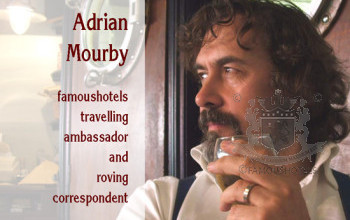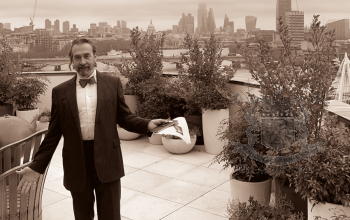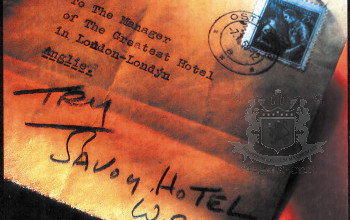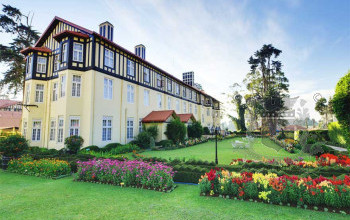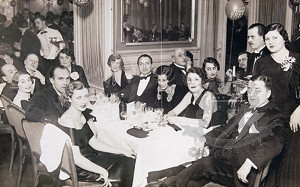Trafalgar - beating heart of England
( words)
By Adrian Mourby
When World War II ended, thousands of people crammed into this world-famous piazza below the National Gallery and danced round its fountains. During the 1980s the square was the focus for Britain’s anti-apartheid rallies, in November 2015 it was here that young people gathered to sing La Marseillaise to support the victims of the Paris terrorist attacks and every New Year Londoners jump into Trafalgar's fountains at the strike of midnight.
It has always seemed odd to me that, despite its pole position in the national psyche, Trafalgar Square is almost entirely devoid of hotels. Maybe I assign too much importance to hotels but I believe they are the crowning glory of any city piazza.

London’s most famous square (actually it's more of a rectangle with rounded corners) was built in the 1820s, laid out to plans by King George IV’s favourite architect, John Nash. The site chosen was a small hilly slope north of the Palace of Whitehall. The first buildings constructed to Nash’s masterplan here were the Royal College of Physicians and the Union Club (now combined into the diplomatic mission known as Canada House). They were built between 1824 and 1827. Next was the long, low National Gallery, which was begun in 1832 between what is now Canada House and the famous church of St Martin in the Fields. This gracious Georgian parish church featured in Dickens’ novel David Copperfield and in E.M.Forster’s A Room with a View. It is the only building on Nash’s square to predate his nineteenth-century redevelopment.
Morley’s was the first hotel on Trafalgar Square. It opened in 1832
Moving clockwise round the square from St Martin’s there lies South Africa House which was built in 1936 to mirror Canada House opposite. It actually occupies the site of Morley’s Hotel which was demolished to make room for South Africa House. Morley’s was the first hotel on Trafalgar Square. It opened in 1832 and was a Regency style structure designed by the architect George Ledwell Taylor for the developer Atkinson Morley. Mr Taylor has a remarkable footnote in London’s history. When a grand square on this site was nearing completion in the 1830s the intention was to name it after King William IV (reigned 1830-37) who had succeeded his brother George. However Taylor interceded with the king to name it after Lord Nelson’s famous victory against the French Navy in 1805. Taylor had been Surveyor of Buildings to the Naval Department and well knew William IV who had held the position of Vice Admiral before becoming king. William agreed and accepted having one of the eight feeder roads leading into the square named after him instead.
Morley’s was not originally built as a hotel. Initially Taylor designed the block as series of apartments of the kind occupied by Sherlock Holmes and Dr Watson in fictional Baker Street. This apartment block opened in 1831 but within a year later Morley had reopened it more profitably as a hotel. Sir Arthur Conan Doyle, creator of Sherlock Holmes stayed there in 1900 while he was writing The Hound of the Baskervilles, and it is thought that the fictional Northumberland Hotel in that novel may well have been based on Morley's. Certainly Northumberland Avenue – another feeder road - is just round the corner. However Conan Doyle was not a fan, writing to his mother that he was "somewhat sick" of Morley's hotel and intended to move on.
Northumberland Avenue takes its name from where the powerful Dukes of Northumberland once lived in their Jacobean palace on the Strand.
Northumberland House was demolished in 1874 to make space for a wide avenue of mixed-use Victorian development that today showcases two massive hotels built by Frederick Gordon, the self-proclaimed “Napoleon of the Hotel World”. Gordon had started off as a London restaurateur then opened a number of hotels across England, many of them called The Metropole, a fashionable hotel name in the late nineteenth century. Gordon’s London Metropole on Northumberland Avenue opened in 1885 and since 2011 has been known as the Corinthia London. Next to it across Great Scotland Yard stands Gordon’s even larger Grand Hotel (1890) which contains 300 rooms and is now divided up into the Club Quarters (for business travellers) and a more boutique operation for tourists, but neither hotel actually faces on to Trafalgar Square as Morley’s once did.
However after crossing Whitehall - the main route of government – crossing Pall Mall, which leads to Buckingham Palace one comes to the Trafalgar Hotel St James (51.50755957740019, -0.12912150859534846) which is the only hotel actually on the square itself.
The Trafalgar Hotel stands opposite Canada House where Cockspur Street that feeds into the square. This is one of the few sections of Trafalgar Square to have kept its original Tudor street layout that preceded Nash’s comprehensive nineteenth-century redevelopment.
In the fifteenth century a tenement leased by King Henry VIII (reigned 1509 – 1547) to one Thomas Swallow stood here. The royal stables were located nearby so any housing in this part of Westminster was hardly salubrious. By 1605, in the reign of King James I, there were eight messuages (humble dwellings each with a small patch of arable land) on the site of what would one day become the Trafalgar Hotel. In 1709 they were demolished to make way for the Red Lion Inn which in turn was also demolished to make space for the British Hotel. This was a second Trafalgar Square venture by Atkinson Morley. It was built in the 1860s and stood on Trafalgar Square until demolished to make way in 1886 for shops and offices.
So from 1936 with the demolition of Morley’s Hotel there was no hotel on Trafalgar Square.
By the beginning of the twentieth century a lot of important travel companies had opened offices on the Cockspur Street side of Trafalgar Square. There was Stanfords, the premiere mapmakers to the British Empire. There was the Great Northern Railway of America Company, which stood at 21 Cockspur Street, the Hamburg-America Line at No. 22, Canadian Pacific Railways at No. 30 and North German Lloyd Ocean Mail Steamers at 32 Cockspur Street. Why were so many travel companies located on this side of Trafalgar Square? I can only speculate that it was to do with the presence, nearby of Charing Cross Station which was where European passengers arriving from Calais via the Dover ferry dismebarked in London.
So from 1936 with the demolition of Morley’s Hotel there was no hotel on Trafalgar Square. However in 1998 planning permission was applied for by the L&R Company who wished to retain the facades of Nos 25 to 34 Cockspur Street but to demolish their interiors to build a new hotel, the first in decades that would look directly on to Trafalgar Square.
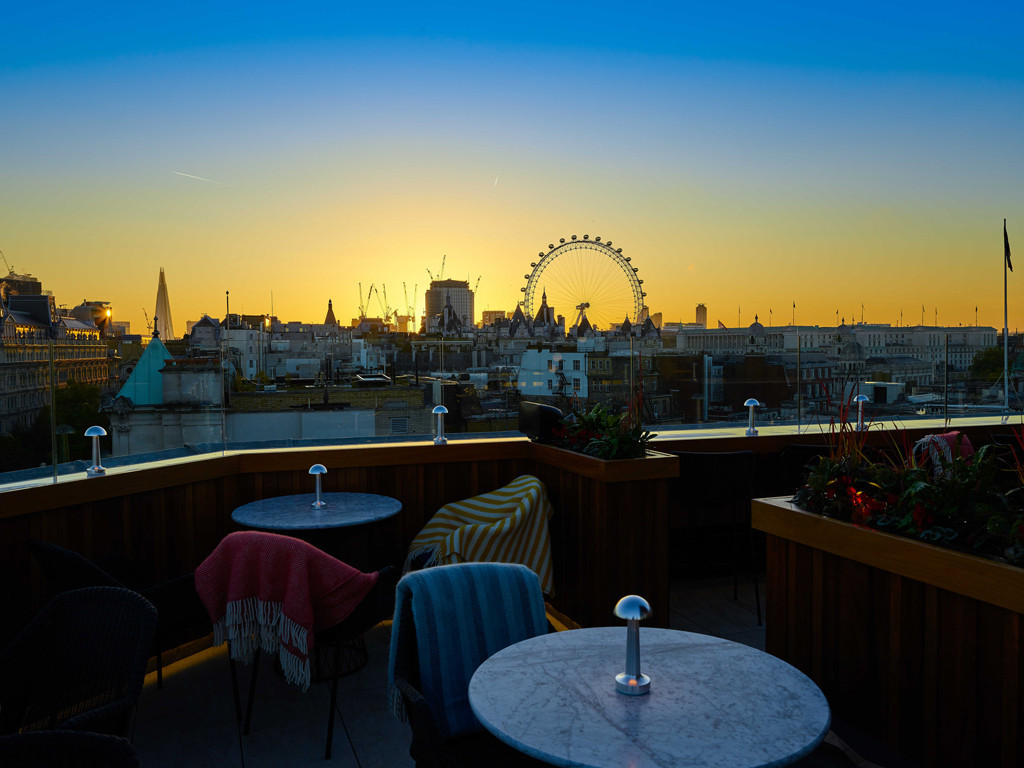 Vista from Vista
Vista from Vista
This new building opened in 2006 with 130 modern rooms cleverly tucked behind the Edwardian façades of all those offices. It was also designed to have a rooftop bar, known as the Vista and a ground floor dining room known as Rockwells. In 2017 L&R completely refurbished their hotel, creating a new lobby and enclosing most of the rooftop Vista Bar. Although hugely popular since its opening because of its panoramic views, the Vista was wholly at the mercy of London rainfall, even in summer.
Today known as The Trafalgar St James and managed by Matthew Beard, the hotel retains its unique selling point of being the only place to stay on the square itself. Victoria and David Beckham came to stay when she was opening the Harrod's Christmas Sale. The Rolling Stones visited and spent time on the rooftop Vista Bar and photos of them are in many of the hotel’s bedrooms today. In 2014 the film Edge of Tomorrow featured Tom Cruise’s character landing a helicopter in Trafalgar Square - the first and only time such a stunt has happened in a movie – and this was shot from the Vista Bar.
Trafalgar Square’s one hotel makes the most of its unique position. On a warm summer evening when the Vista is crowded it’s unlikely that many drinkers are aware they’re standing above where King Henry VIII once stabled his horses. But Londoners take history in their stride. The past is down there somewhere but tonight most people just want to party.


